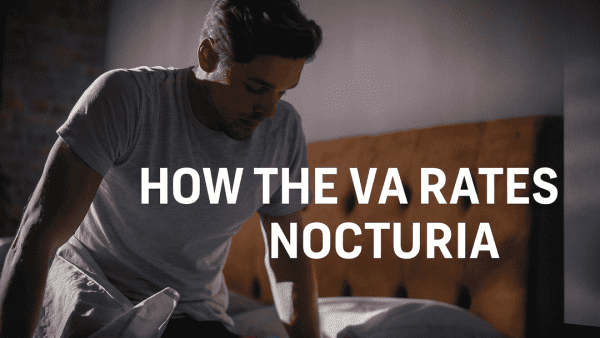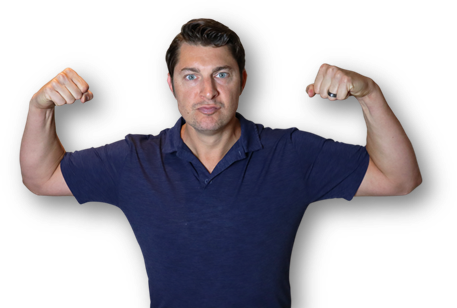Looking for Expert-Level VA Claim Answers?📱Call Us Now! 737-295-2226
Could excessive sweating qualify a veteran for VA disability benefits? Yes!
Although the VA considers hyperhidrosis a qualifying disability for veterans benefits, it doesn’t mean getting a hyperhidrosis VA rating is ensured. Proving service connection for a hyperhidrosis VA disability claim is often challenging.
In this post, we reveal what you need to know about hyperhidrosis VA disability ratings, including how the VA rates it, how to prove service connection and more.
Let’s get started.
Table of Contents
Summary of Key Points
- Hyperhidrosis is a condition that causes profuse sweating unrelated to environmental heat or strenuous exercise.
- A VA hyperhidrosis rating is possible if your condition affects your ability to perform tasks and is proven to have been caused or worsened by your military service.
- The VA rates hyperhidrosis at 0% and 30%, based on whether excessive moisture makes it difficult to handle paper or tools, and remains unresponsive to therapy.
- Some primary service-connected conditions, such as anxiety, diabetes, and PTSD, may cause or worsen hyperhidrosis.

What is Hyperhidrosis?
Hyperhidrosis is excessive sweating caused by an overactive sympathetic nervous system (a network of nerves that enables the body to relax and perform certain functions).
If you are diagnosed with hyperhidrosis, you are likely all too familiar with its symptoms, such as sweating that soaks your clothing and perspiration that is so excessive that it drips off your hands.
As a veteran, you may qualify for a hyperhidrosis VA rating if you prove the condition is linked to your military service or if it’s caused or worsened by another “primary” service-connected condition. Keep reading to learn more about how secondary conditions could help you get a hyperhidrosis VA disability rating.
Military Service and Hyperhidrosis
Several situations could qualify you for a VA rating for hyperhidrosis, including:
Stress and Anxiety: Military life often requires high-stress settings, such as battles and challenging training drills.
A stress reaction can set off the “fight or flight,” which can cause heavy sweat. Long-term exposure to stressful situations can cause extended worry or lead to PTSD, which can worsen sweating problems.
Physical Exertion: As most veterans know, in the military, a great deal of physical exertion is involved in training and fighting.
When you work out for extended periods, particularly in hot, humid weather, your body sweats more to cool itself, not to mention the heavy padded protective gear that traps heat and moisture from sweat.
Medical Conditions – Veterans diagnosed with PTSD involving elevated levels of anxiety and stress can experience hyperhidrosis as a secondary condition. When you feel anxious or worried, there is an elevated level of excitement, which causes you to sweat more.
Thyroid disorders can be worsened by military service stress, which can lead to excessive sweating.
A service-related injury or illness that affects the nervous system can cause hyperhidrosis. This type of injury may occur more commonly in veterans than in the general population.
Medications – The side effects of some drugs used to treat PTSD include sweating. Medications like painkillers and antidepressants can also cause you to sweat a lot.
Environmental Factors – It is common for military personnel to work in harsh weather, such as extremely hot or very cold conditions. Environments like these can impact sweating and worsen hyperhidrosis.
Symptoms
The primary symptom of hyperhidrosis is sweating beyond the amount a person usually experiences. This excessive sweating usually affects the palms and hands, feet, face, groin, trunk, or underarms and causes at least one weekly episode of sweating on both sides of the body.
Other hyperhidrosis symptoms include:
- Sweating so heavily you cannot perform everyday activities (e.g., using a computer or handwriting)
- Sweating worsens in stressful situations (such as when embarrassed or anxious).
- Soft, cracked, peeling skin that may become infected in areas constantly exposed to moisture
- Body odor from an abundance of sweat and bacteria constantly being excreted on the skin
- Emotional distress (e.g., frustration, intense embarrassment, or insecurity) in response to excessive sweating
- Night sweats, flushing, itching, and inflammation
Contributing Factors
Hyperhidrosis could be a secondary condition if you have certain other conditions, such as:
- Some medications (e.g., antidepressants, pain relievers, and other drugs)
- Hypoglycemia (low blood sugar)
- Hyperthyroidism (an overactive thyroid gland)
Hyperhidrosis VA Ratings
Hyperhidrosis VA ratings can be 0% or 30%. Hyperhidrosis is rated on the VA Code of Federal Regulations, 38 C.F.R. § 4.118, under diagnostic code (DC) 7832, as follows:
30% VA Rating
Unable to handle paper or tools because of moisture and unresponsive to therapy.
0% VA Rating
Able to handle paper or tools after therapy.
Proving Service Connection
If you are seeking VA disability for hyperhidrosis, it’s imperative that you clearly show a strong nexus (i.e., an in-service event, injury, or illness that caused or aggravated your condition).
The exact cause of hyperhidrosis cannot always be identified, which makes it challenging to show a connection between an event and the onset or worsening of your condition.
A healthcare provider’s well-informed opinion in a Nexus Letter, explaining how your hyperhidrosis was likely caused and how it impacts your daily life, will strengthen your disability claim.
A medical nexus (or link) between the current diagnosis and the in-service event, injury, or illness can be proven in a Nexus Letter.
Hyperhidrosis as a Secondary Condition
In a VA disability case, a secondary condition is a medical condition caused or aggravated by a service-connected disability.
Though hyperhidrosis secondary to other conditions is less common than primary hyperhidrosis, it may be easier to show that your condition resulted from a primary service-connected disability.
Hyperhidrosis can occur secondary to several other conditions, including:
- Anxiety – If you have a current anxiety disorder diagnosis, which was deemed service-connected, which increases your hyperhidrosis symptoms, you may be eligible for a hyperidrosis secondary disability rating.
- PTSD – If your hyperhidrosis first appeared when you began experiencing PTSD symptoms (e.g., elevated levels of anxiety and stress), the VA may consider it a secondary condition
- Diabetes – If you have diabetes because of Agent Orange exposure or another service-related cause, and your diabetes causes excessive sweating, the VA may consider hyperhidrosis as a secondary condition.
- Nervous system disorders – If you are currently diagnosed with certain nervous system disorders (e.g., a head or spinal cord injury, certain neuropathies, or injuries such as a partial injury to the sciatic nerves) it can cause hyperhidrosis.
- Certain types of cancer – Some cancers, such as hypothalamic tumors, are known to cause hyperhidrosis.
How To File Your Hyperhidrosis VA Claim
The steps to filing a claim to receive a VA rating for hyperhidrosis include:
- Gather your documentation – including your current medical diagnosis and other medical records, diagnostic tests, your nexus letter, or Independent Medical Opinion linking your condition to a military service-related event.
- Complete the VA Form 21-526EZ – to apply for disability compensation. Be sure to include all details about your symptoms and how they impact your daily life.
- Submit your claim – you can submit your claim online, by mail, in person at a VA regional office, or by fax. You can also work with a claims agent, or Veterans Service Organization (VSO) to assist with filing.
- Undergo the Compensation and Pension (C&P) examination: the VA will likely schedule you for medical examinations to evaluate the extent of your hyperhidrosis.
Compensation and Pension Exam for Hyperhidrosis
After your VA disability claims submission, your next step will likely involve attending a compensation and pension (C&P) exam.
A C&P exam allows you to explain how your hyperhidrosis adversely affects your life. See the video below for the number one tip during the C&P exam.
The #1 VA C&P Exam Tip! (VIDEO)
Total Disability based on Individual Unemployability (TDIU)
If your service-connected hyperhidrosis symptoms are severe enough to keep you from getting or keeping gainful employment, you could be eligible for TDIU, provided you meet the following criteria:
- You have at least 1 service-connected VA disability rated at 60% or more disabling, OR
- You have 2 or more service-connected disabilities, with at least 1 rated at 40% or more disabling and a combined VA rating of 70% or more
Conclusion
Although getting a VA rating for hyperhidrosis can initially seem daunting, learning what constitutes a successful VA disability claim can mean the difference between a denied claim and getting the VA benefits you deserve.

(FAQs) Frequently Asked Questions
How does the VA rate hyperhidrosis?
0% or 30%: The VA uses specific criteria to rate the severity and impact of hyperhidrosis. The possible VA disability ratings for hyperhidrosis include 30%: “Unable to handle paper or tools because of moisture, and unresponsive to therapy.” and 0%: “Able to handle paper or tools after therapy.”
Is there a test to diagnose hyperhidrosis?
A provider can diagnose hyperhidrosis by performing a physical exam and listening to the client’s medical history.
The level of sweating can be measured in two ways. The first is the starch iodine test, which turns sweat brown and is used to detect excessive sweating (hyperhidrosis). The second test is performed via a “vapometer,” a device that measures water loss through the skin and the amount of sweat secreted by the hands, feet, scalp, and underarms.
Is hyperhidrosis secondary to PTSD?
Yes, in some circumstances, hyperhidrosis can be deemed secondary to PTSD. For example, if your hyperhidrosis first appeared when you began experiencing PTSD symptoms, including high levels of anxiety and stress, the VA may consider your hyperhidrosis secondary to PTSD.
Want Expert-Level Support for Your VA Disability Claim? WE GOT YOUR SIX!

- VA Claims Insider is the #1 most trusted name in VA disability claims.
- Work directly with a VA claims coach who can educate you to VA claim victory.
- 25,000+ disabled veterans served in our membership programs since 2016.
- 30% average rating increase for veterans who complete our #1 rated Elite program.
- 4.7/5.0 average rating out of 5,500+ total reviews; over 4,500 5-star reviews.
About the Author

Sherry Christiansen
Sherry Christiansen is a professional Medical Writer with a clinical mental health background. Over the last decade, she has written health and wellness articles for organizations like Medical News Today, Verywell Health, and Healthline. In 2013, she also helped launch an educational website for the first Alzheimer’s prevention clinic in the country at Weill Cornell Medical Center – NewYork-Presbyterian. As a spouse of a career military service member, Sherry is deeply passionate about supporting veterans. It is an honor for her to assist veterans in receiving the benefits they deserve after becoming ill or injured while serving our country.



